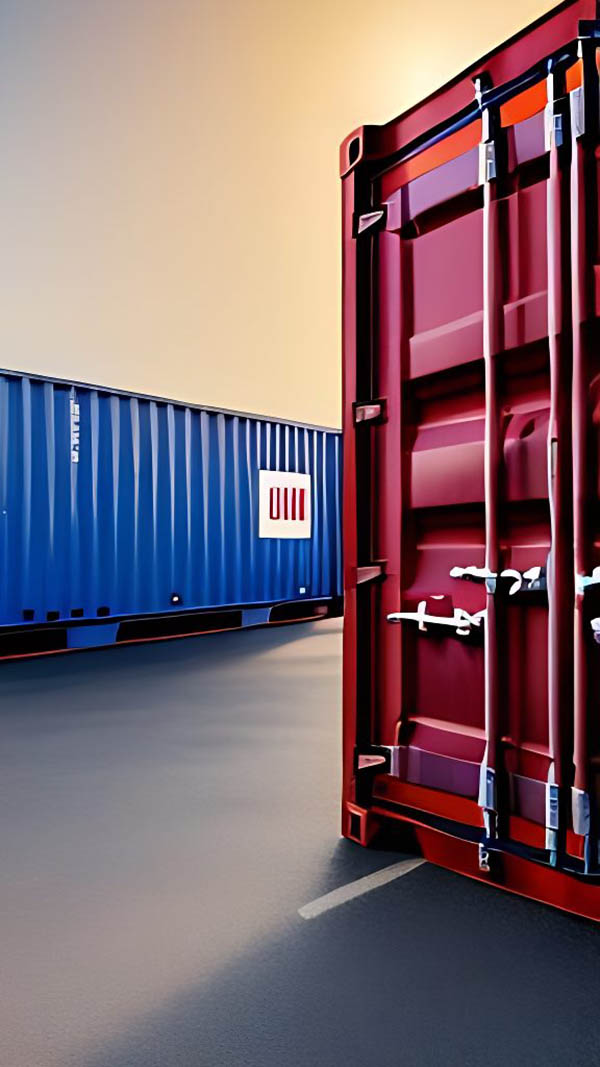Today, over 90% of all the non-bulk goods are transported by container ships. This is over 2 billion metric tons currently, or an equivalent of over 900 million 20 foot containers. But how can this incredible amount of containers go safely from one part of the world to another? Recently container logistics got a new helper: AI.
Today’s container logistics
When you open your fridge door, chances are that many of the things you see came in a container, from another part of the world. Even the fridge itself may have travelled from far away. Container ships are getting bigger and bigger as time goes by, and are currently at a staggering 24,000 containers in just one ship.
The whole logistics and supply chain of most products hinges on the standardized 20 foot or 40 foot containers. But tracking that amount of steel boxes going on and off ships, on and off trucks or on and off trains isn’t easy. Not from beginning to end of their journey, and not even inside one of the ports they may pass in their voyages. Fortunately, all container nowadays have what is called a unique “BIC number”, where BIC is the Bureau of International Containers.
This series of letters and numbers identify every container clearly, so it can be tracked from start to finish without problems. Or almost without problems. Because the sheer number of containers is a problem in itself. Tracking the contents of the currently biggest ship (24,000 containers) by hand is just impossible. That is why, for some years now, there are cameras on the cranes, entries and exists of the port and throughout the whole port area, to keep an eye on the BIC number, in order to always know where a certain container was last seen. And this system has been enhanced in recent years with artificial vision systems that can read the BIC number and log the container appearing in front of that particular camera, so it can be searched if necessary, to track it down.

The problem with containers in ports

One would think that, even in the apparent state of permanent chaos that a container port seems to be in, there is a method to keep everything on track and in its place. At the end of the day, you almost always get what you have ordered from somewhere in time. That surely means that containers hardly ever get lost.
But, unfortunately, they do. According to recent statistics, in 2022 661 containers fell off ships. Which isn’t bad, if we compare it to 2013, when almost 6,000 containers were lost at sea. However, what we really want to know is how many containers are lost in port. Although there are no reliable figures regarding this, talking to port authorities reveals that “missing” containers aren’t that rare an event. In the end they usually turn up again due to some misplacement, but locating a “lost” container costs time and money. And this is why technology is used more and more to avoid these incidents.
Cameras and AI help tracking down containers
We already mentioned the extensive camera network that every port has nowadays, to control the operation developing on port ground. We already talked about the BIC code. If you put both together and add some artificial intelligence to the mix, you get a real-time container monitoring platform that can tell you at all times where a certain container exactly is.
One of these platforms is our own Videoma, that we are expanding to include logistics tracking functionalities, using the same AI analyzers we already successfully use in Law Enforcement and other security related tasks.
The process begins when it is unloaded from a ship. The crane has a camera that records the BIC number and passes it to the system, which is connected to the port VMS (Video Management System) that receives all of the camera feeds, and reads the BIC number with a specialized OCR/ALPR module (adapted to the BIC format). At the same time, the system registers the camera that provides that information, as well as the current timestamp.
If the container goes to temporal storage in the port, the straddle carrier usually has a camera also, to record the movement. If the container goes by truck, the system records the license plate of the truck during loading and unloading, together with the BIC, to keep both numbers associated.
This allows an extensive control at any point in time, using infrastructure that is already in place at the port, but enhancing it with an automated tracking system that takes care of everything.
Should a container go missing, it is easy to find the last images of it in the system, together with the last camera that identified the BIC. As both entrance and exit of the port also have cameras, it’s easy to figure out if the container is still on port grounds or has been taken away. The platform can be used from mobile, which is very convenient when on-site.

Conclusion
To ease management and tracking of shipping containers while they are at the port, artificial intelligence driven tracking systems connected to the port cameras are used nowadays to keep an extensive control of the location of each and every container inside the port area, as well as all the ones that arrive or leave either by ship, truck or train.
